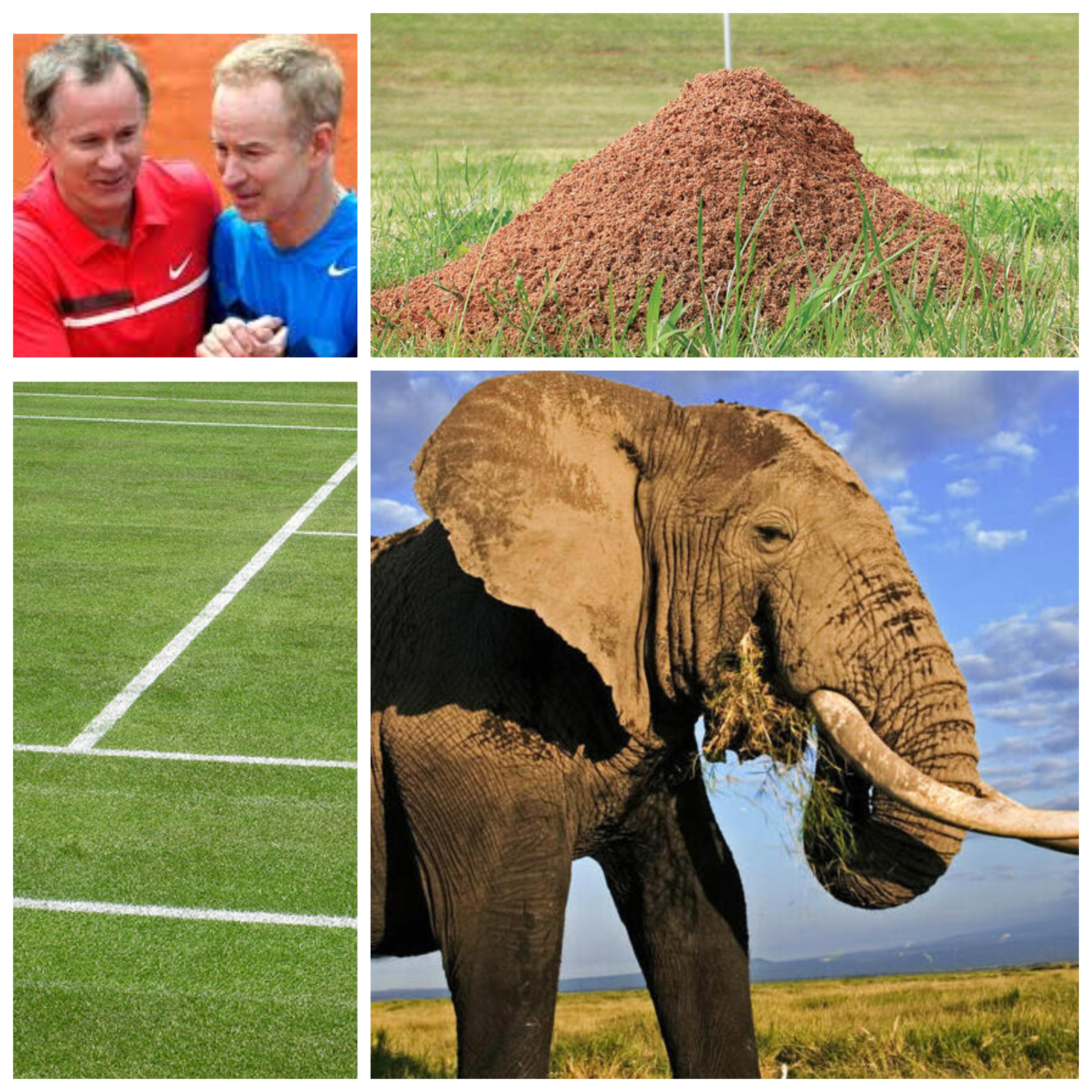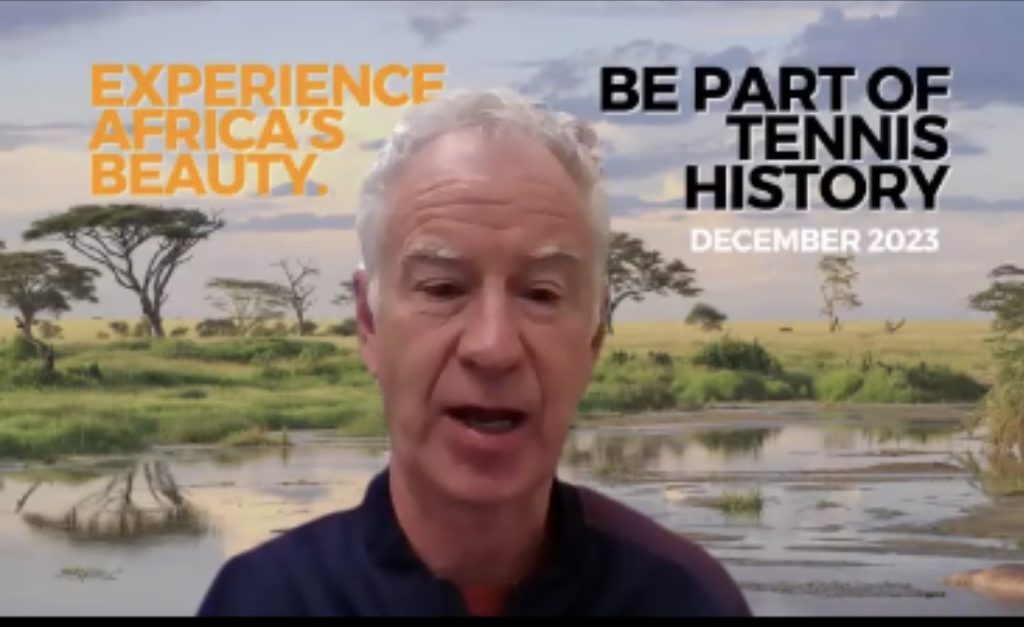By Randy Walker
@TennisPublisher
John McEnroe and his younger brother Patrick McEnroe will be playing in the first-ever tennis match in the Serengeti this coming December.
A special tennis court will be constructed on the Tanzanian plain as part of the bucket-list trip for tennis fans to travel to Tanzania with the McEnroe brothers with Insider Expeditions (Read more about the tour and how you can join the McEnroes there here: https://www.worldtennismagazine.com/archives/21737) For environmental reasons, the tennis court has to be temporary or biodegradable.
“The court is not going to stay obviously for environmental and conservation reasons,” said Paul Cohen of Insider Expeditions and the trip’s organizer. “It’s being built just for this purpose. And also at the same time when we look at the stands, it’s going to be a little bit more unique and that the fans will be sitting among the rocks rather than sitting… We’re not building bleachers. This isn’t Davis Cup or the U.S. Open, so it’s just going to be built for this occasion and then within a few weeks the Serengeti will go back to the peaceful Serengeti that it once was and still is.”
With the court needing to be temporary or biodegradable, it brings up the question…. What court surface should it be?
Of course the most famous and well known biodegradable court surface is grass, a surface that all high-level tennis professionals are familiar with if they got any where near Wimbledon. However, grass court creation and maintenance is very expensive and difficult, as you can learn about via grass court tennis maintenance guru La Maurice Gardner here: https://www.youtube.com/watch?v=4TuOeZE4EUM&t=230s
Another interesting biodegradable court surface may also be ant hill bed. Ant hills and termite mounds are commonly found in the Serengeti. Ant hill bed courts have a storied history in Australia, in particular in rural areas in the Outback. It famously was the court surface where Rod Laver learned to play the game that led him to be the only player to win two Grand Slams.
As Laver writes in the book The Education of a Tennis Player, (for sale and download here: https://a.co/d/8KOC9Kz) “My first court was ant bed, homemade by my Dad and the boys in the family. It’s common stuff in the Australian Outback. You knock over an anthill, which has become quite hard, crush it and spread the grit on a level piece of ground where the grass has been skinned off. It plays a lot like clay.”
In John McEnroe’s previous tennis related trip to Africa – the 2000 USA vs. Zimbabwe Davis Cup first round in Harare, Zimbabwe – McEnroe “stepped in it” in a question-and-answer session with fans at the ESPN Zone restaurant in New York City when the USA drew an away match in Zimbabwe for his first tie as the U.S. Davis Cup Captain.
“They are going to pick a surface that they feel they have the best chance of beating us on, which will probably be cow dung,” McEnroe joked. The comment stirred up some controversy as being insensitive, despite the fact that cow dung courts have been used in the past in multiple Davis Cup matches, including when the United States played India in Davis Cup in 1963 in Bombay, India. “I didn’t think it was crazy, but foreigners definitely did when they heard of it,” Indian tennis great Vijay Amritraj once said of cow dung courts in his country. Could the tennis court in the Serengeti be made of, perhaps, elephant dung?
Regardless of the surface, it will be an iconic happening. It will for sure rival the famous Andre Agassi vs. Roger Federer tennis hitting session on a specially-made tennis court on the helipad at the famous Burj Al Arab hotel in Dubai in 2005 as one of the greatest tennis court photo opportunities of all time.
.


